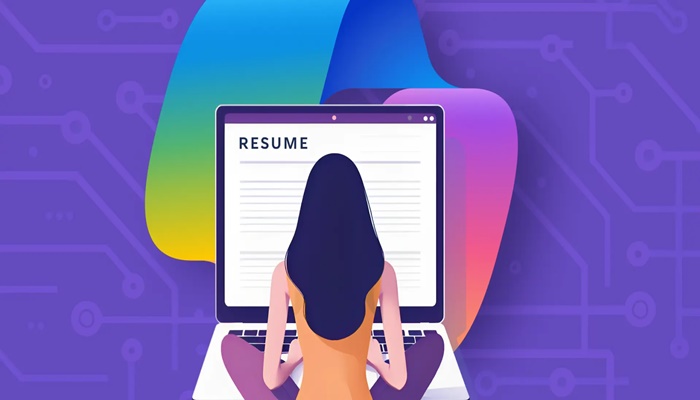Employees often tell us they never learned the basics of money management. Most turn to friends, family, FinTok (TikTok), Google and Reddit – only to end up more overwhelmed because there’s no single, trusted resource for clear, reliable guidance. And even if they find good information it’s hard to know if it’s relevant for their specific situation.
Personalized financial advice has traditionally been reserved for the wealthy and high‑earners. But advances in technology and innovative delivery models are breaking down those barriers, putting life‑changing tools and expertise within reach of everyone. We partner with employers to integrate financial wellness directly into the workplace – empowering employees to navigate every money decision with confidence.
I’m going to share two stories that are going to sound familiar. These come from people who, like so many of us, were juggling work, family, and life – and quietly struggling to get a handle on their own finances. For both, that changed when their employers offered financial wellness as a benefit, enabling them to get high quality personalized care from a trusted source without having to pay for it.
Navigating challenging life moments
For one person, after attending a webinar on saving and budgeting, including the 50/30/20 budgeting rule, she signed up for a one-on-one session with a financial advisor. She was navigating a challenging life change and the financial stress that came with it – unexpected debt, confusion and uncertainty. What struck her most wasn’t just the advice she received – it was how seen and supported she felt.
“It was the most fantastic financial conversation of my life,” she told us. “I finally had someone meet me where I was, with empathy and actionable guidance.”
Life happens – kids, home buying, job changes, divorce, bereavement – and people need trusted support to make smart decisions in those moments. But without the right tools, technology, human support and resources, it can be hard to navigate those moments in time.
Conquering debt
Debt has become a fixture in the US, impacting individuals across income levels and life stages. From student loans and credit card balances to auto loans and mortgages, the average American owed $103,358 in 2023. As interest rates fluctuate and inflation pressures persist, many households are finding it harder to keep up with payments, leading to increased financial stress and decreased long-term stability. Addressing debt isn’t just about paying it down – it’s about understanding its root causes, building better habits and having access to resources that support long-term financial wellness.
We hear all the time about the challenges people are having to keep up. We recently worked with an employee who had amassed significant debt across multiple credit cards, and he found himself in a challenging position, trying to dig out of what seemed like an impossible hole.
Through the benefit provided by his employer, he was able to create a plan and gain the confidence and know the actions he needed to take. He learned about how to prioritize his different debt loads, how to curb spending and where to make changes in his day-to-day financial habits. In just a few months, he paid off more than a third of what he carried, and he’s well on his way to being debt free.
The changing landscape of financial literacy
Personal finance, once a matter of balancing a checkbook and saving for retirement, involves a dizzying array of choices for most people. From cryptocurrencies to gig economy income, high-yield online savings accounts to buy-now-pay-later, the options are nuanced, and rarely do people have a complete understanding. Yet, despite this shift, most people have received little formal education on how to responsibly manage these choices.
Recent surveys capture the magnitude of the challenge. According to the 2023 Personal Finance (P-Fin) Index, US adults, on average, answered fewer than half of basic financial literacy questions correctly, and one in four adults could answer no more than a quarter of them. The complexity of our financial system has largely outpaced the resources available for people to effectively learn and adapt, and as a result people carry significant financial burden and the challenges that come with not knowing what to do when it relates to their money.
The role of the workplace
Research from PwC shows that 56% of employees say they’re stressed about their finances. This stress doesn’t stay at home – it walks through the office doors every morning, impacting focus, productivity, and even retention.
It’s part of the reason why we work with employers as they are in a unique position to help close this gap. By offering thoughtful financial education and support, they can empower employees to build confidence, develop essential skills and contribute to a stronger, more focused workforce. By providing this resource for free to their employees, introducing employees to a trusted resource and even allowing time on the job to learn about finances, they can bypass major barriers that often prevent individuals from getting access to financial education and health.
Furthermore, employers play a huge role in the makeup of one’s financial resources, providing their employees with their paychecks, benefits, and often their retirement accounts. It is a natural fit that employers would also be an ideal provider of financial literacy. By working with employers, we have the power to support every single working individual with support. And the impact ripples far beyond budgeting or debt – it creates confidence, stability, and empowerment.
Source – https://www.weforum.org/stories/2025/04/financial-literacy-transform-employee-confidence-wellbeing/




















